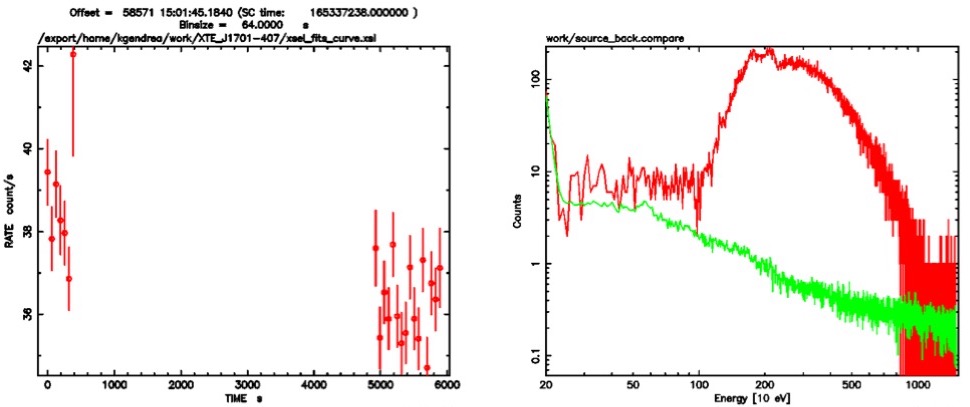NICER / ISS Science Nugget for April 4, 2019Follow-up of MAXI triggers provides new insight into transient eventsOn April 1, members of the MAXI and NICER teams published Astronomer's Telegram #12617 (NICER's 29th) describing MAXI's detection of a bright X-ray burst from the X-ray binary XTE J1701-407. This system, consisting of a neutron star accreting matter from a low-mass companion star, was discovered in 2008 by NASA's RXTE telescope, during a prolonged outburst. The new MAXI detection is the first reported activity of this source since 2011. "Type I" X-ray bursts result from explosive thermonuclear burning on the surface of a neutron star. Depending on the fuel – most commonly hydrogen, occasionally helium, and in rare cases carbon – an X-ray burst can last anywhere from a few seconds to hundreds of seconds ("intermediate-duration burst") to more than an hour ("superburst"), with peak brightness also increasing for the longer durations. The XTE J1701 burst detected by MAXI at 11:43:12 UT on March 29 was unusual in that its brightness did not fade during the 40-second transit through MAXI's field of view. This alone suggested a long duration, but the burst was also exceptionally bright (~50% higher X-ray count rate than the Crab Nebula). On the next ISS orbit, XTE J1701 was not detected. Taken together, these observations implied a helium-burning intermediate-duration burst. Through email notification from the MAXI team, NICER followed up with an observation of XTE J1701 two orbits (3 hours) after the MAXI burst detection (see figure, next slide). Unfortunately, given the elapsed time, only the final dimming tail of the burst was detected with NICER in two successive ISS orbits (left panel).
NICER is working toward improving its "target of opportunity" response times, through training of on-call operations staff, more-rapid coordination with MAXI and other sources of triggered observations, and ultimately, automated commanding both on the ground and, in partnership with MAXI, through ISS infrastructure as part of our proposed OHMAN (On-orbit Hookup of MAXI and NICER) effort. NICER
|



